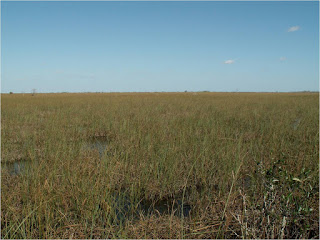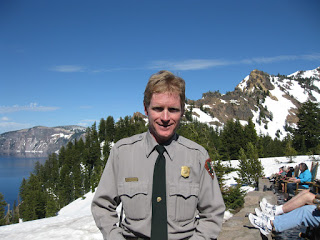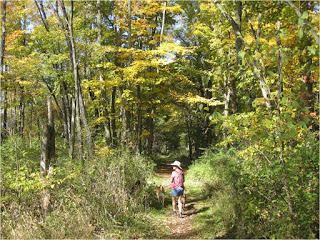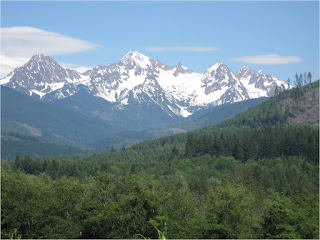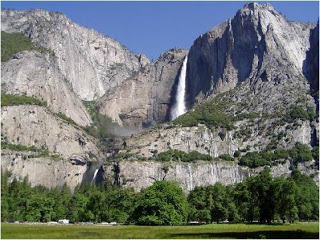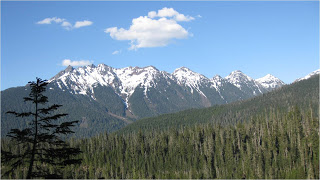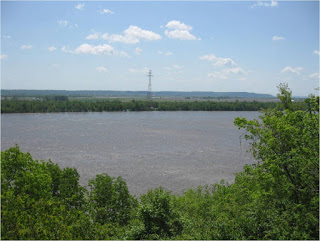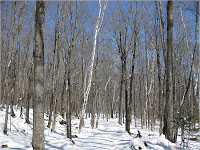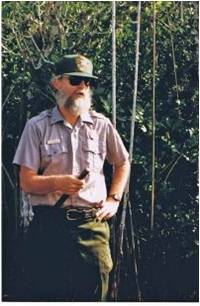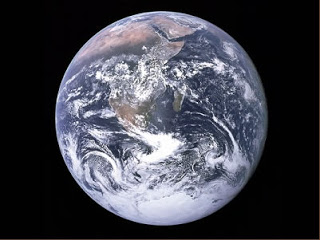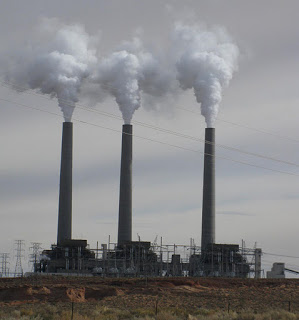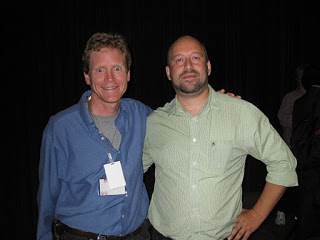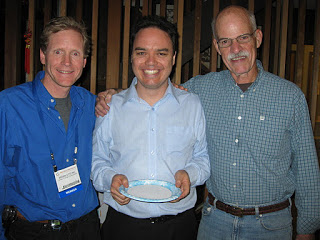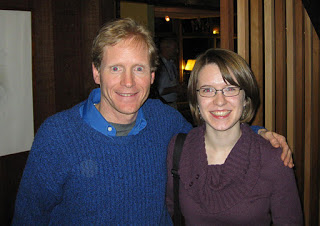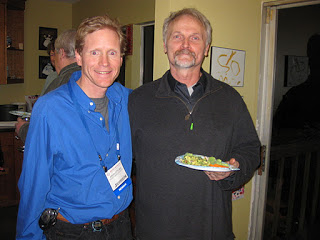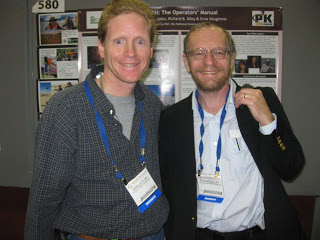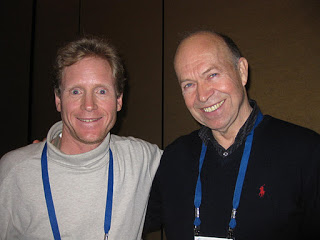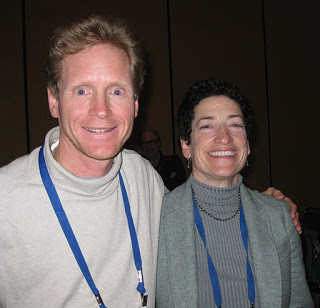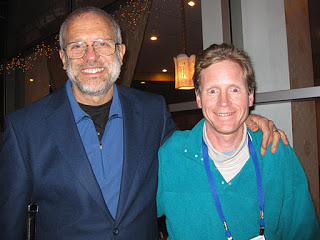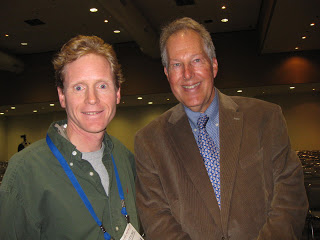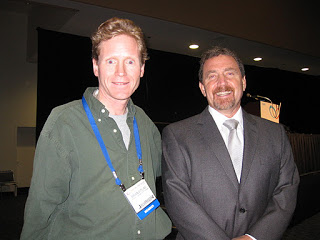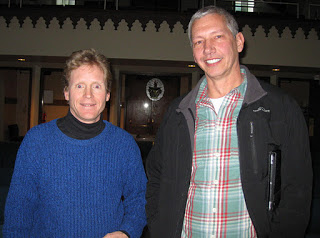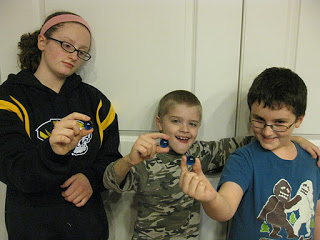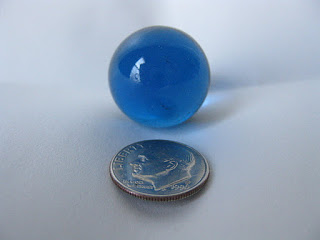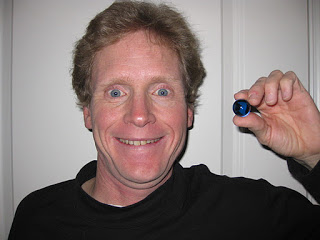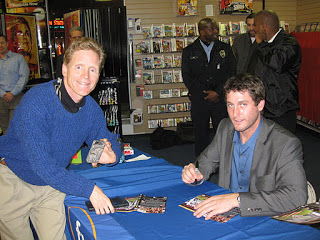Category Archives: Uncategorized
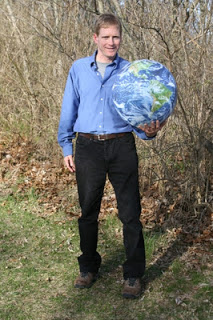
EXPAND YOUR PATRIOTISM!
A MESSAGE THAT STICKS
MY 12 CLIMATE CHANGE HEROES
2. John Cook
(pictured in the center) He is the creator of skepticalscience.com. This website makes climate science accessible to the layman by using easy to read, jargon-free language to debunk climate myths spread by climate science doubters or “skeptics.” Even more, John set up Skeptical Science to be a database of peer-reviewed science to best answer the skeptic’s full range of arguments. (And nobody, including John, knows why he is holding that paper plate)
A LITTLE BLUE MARLE COULD SAVE THE EARTH
FIND THAT “ONE THING,” AND STICK WITH IT
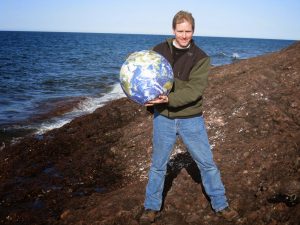
I read that title and essay by Christian missionary Keith Barnett back in the year 2000. In the essay, Keith talked about how he felt God had been speaking to him for a few years to just focus on one thing. This singular divine focus led Keith to be a missionary in Guatemala at the time.
Keith went on to explain that just like a plant growing has a tendency to grow in many directions and produces off-shoots, or “suckers.” These small off-shoots can draw of the life and vitality of the plant to useless ends. For this reason, a wise gardener cuts off the smaller offshoots. This causes the plant to direct all of its life force into the fruit of the plant, its seed, blooms, and its fruit.
This essay struck a deep accord in me because I was struggling at the time to find my “one thing” and stick with it also. At the time, I was a naturalist guide in Everglades National Park narrating the boat tours the tourists. I worked for a private company that treated its employees poorly and it did not really care about the environment. I also felt I had a deeper message to give the world than just pointing out the alligators, crocodiles, birds, dolphins and manatees in the Everglades. Still, when there was not wildlife around, which was often, I shared a message of the importance of the natural world and protecting the Everglades. However, the tourists just focused most of the time on spotting the wild animals and paid little attention my message of conservation.
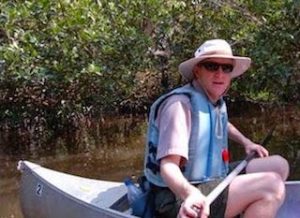
Brian Ettling, Everglades National Park, around 2006
I knew in my heart and gut that I did not want to be a naturalist guide in the Everglades forever. However, I had no idea what the vision or “one thing” was. Around this time, I found a book in a used book store, Laboratory Earth: The Planetary Gamble We Cannot Afford to Lose by Dr. Stephen Schneider. He was a climate scientist out of Stanford University. I purchased the book because passengers on the boat tour were asking me about global warming. I wanted to start educating myself on this issue. The science in the book was very technical, but I was hooked. I started reading more books on climate change over the years, especially whenever I would see a new book on this subject at Barnes and Noble.
In spring 2008, I quit working as a naturalist in the Everglades. I knew I wanted to go to grad school to study about communicating climate change. I set out a deadline for myself to be enrolled in a graduate program by 2010. Unfortunate, I did not have a pin point dedication to this goal. I got distracted by dating the wrong women, traveling, and having fun as a seasonal summer ranger at Crater Lake National Park in Oregon.
It is now the last week of 2011. I am still not in grad school yet. However, I have made major strides in following my “focus” and sticking with my deepest passion to be a climate change communicator. In this past year alone, I started this blog. I worked at the St. Louis Science Center answering questions and engaging visitors at their temporary climate change exhibit. I joined South County Toastmasters. I have successfully presented four speeches now at Toastmasters over the past year about climate change and promoting sustainable green living. For my last two speeches, the other Toastmaster members voted for me as ‘Best Speaker.’
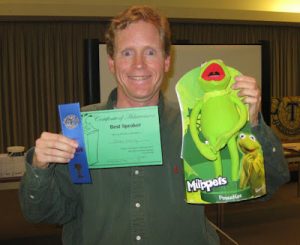
Brian Ettling winning “Best Speaker” for Toastmasters speech, November 2011.
This past summer at Crater Lake, I created an evening campfire program on the impact of climate change on Crater Lake. This past September, the National Park Service invited me to attend the 2011 NASA ‘Earth to Sky’ conference in Washington D.C. on successfully communicating climate change with park visitors.
Within the past month while currently living in St. Louis, Missouri for the winter, I co-founded Climate Reality St. Louis Meet Up group. This is a group of locals that meets regularly to discuss the impact and solutions to climate change in St. Louis. In early December, I attended the American Geophysical Union Conference in San Francisco where I got to meet and interact with America’s top climate scientists and communicators.
In 2012, I hope to meet with professors at grad schools like Columbia, George Mason, and Colorado State to find a program that can really enable me to be a top climate change communicator. I also hope to give more speeches at Toastmasters and elsewhere about climate change. I also hope to return to Crater Lake to present my climate change evening program again and keep improving it. 2012 is going to be an exciting year for me as I edge ever closer “finding that one thing and sticking with it” as a climate change communicator.
The Two ‘Green’ Wise Men Pushing on My Best Friend
In the original Christmas story, a bright star appears over Bethlehem attracting three wise men from the East. They traveled from far away to see what they believed was the Messiah who was just born. The arrival of the wise men was considered to be a very strong signal. This baby born in Bethlehem was a very strong to be a very strong teacher, prophet and healer.
Over 2,000 years later, the signal of climate change is becoming evident from many different sources of scientific evidence, such as changes in the atmosphere, oceans, polar ice shelves, sea level rise, weather patterns, etc. Just like the prominent news in Bethlehem of wise men arriving from the East, it is getting harder to ignore the vast amount of news about climate change these days.
For me, it has been fascinating how my best friend, Scott, has reacted to the news of climate change. I have known him for nearly 30 years. I met him back in 7th grade when we would eat lunch together at school and talk baseball. We still talk regularly on the phone. Since high school, our lives have gone in totally different directions. He is an auto mechanic outside of Seattle, Washington with a wonderful family. I am a single seasonal park ranger at Crater Lake. Scott has similar conservative political views as ‘Joe the Plummer,’ who became famous during the 2008 Presidential Campaign. I have become very a very progressive environmentalist with spending the last twenty years working in the national parks. We have kept the friendship strong over the years with the unspoken rule of not talking about politics.
Over the years, Scott has had a lot of fun making fun of the issue of global warming. He loved to joke how he would love to see palm trees in Seattle and his home state of Wisconsin. He would welcome sea level rise because he could launch his boat so much closer to the Puget Sound form his house. We would have so much fun talking about other stuff about baseball, the outdoors, music etc. However, I would have to bite my tongue so hard that it would almost bleed at times when he would make his global warming jokes. I would be staying at his house, with his family, and eating his food during these short visits. I wanted to be a gracious guest so I just did not have the heart to correct him.
Scott was very eager to share with me amazing story though when I visited him in 2008. He was teasing his son, Ricky about global warming over the years, just like me. However, Ricky was coming home from school and not giving an inch on this issue. He kept saying, “No, Dad, we are learning about this in school and this is why global warming is a huge concern…“
Finally, Scott wanted to let me know that he thought Ricky was on to something. He could not dismiss his own son and what he was learning in school. His best friend, who is a tree hugger park ranger, he might overlook on this issue from living out in the woods too long. However, it was hard to ignore his son who was coming home from school with articulate facts on climate change. Just like the town of Bethlehem noticing the original Wise Men, it was hard for Scott to ignore the Two Green Wise Men showing up in his life.
As a side note, I called up Scott a few days ago to ask him if this story was true. He said it was. However, we wanted to add that he still welcoming global warming and sea level rise so he can go fishing from his house. However, Scott went out of his way to wish me all the best as I am following my passion to be a climate change communicator. His tone could not have been more supportive and encouraging. In the end, that is all you can ask for in a best friend and more. It makes me want to double my efforts even more to inspire people to resolve climate change. I am going to do all I can to prevent dangerous climate change. In the end, all the negative consequences are going to far outweigh any possibility of Scott being able to fish from his house.
WHEN NATURE CALLS, WATCH OUT FOR THE SUN
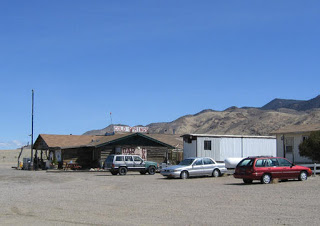 |
| Photo by Gary Reysa, http://www.builditsolar.com/Projects/PV/ColdSprings.htm |
It was one of those road trips where you are in desperate need of a restroom. It around 1 pm in May, 2008. I was driving across country from my winter job in Florida to my summer job at Crater Lake National Park in Oregon. On this day, I was driving across the World’s Loneliest Highway, Highway 50 going across the state of Nevada. There were no developments (i.e. RESTROOMS) for past 100 miles of my drive. As usual, I was drinking lots of water to keep me awake and hydrated while I was driving. However, I thought my bladder going to burst before I reached any civilization. I still had around 100 miles to drive to meet up with a friend in Carson City, Nevada. Finally, I saw a gas station/mini mart around the “blink and you will miss it” extremely tiny town of Cold Springs, Nevada. It felt like a miracle to finally see an active building that may have a restroom.
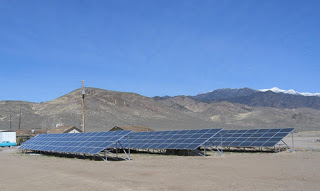 |
| Photo by Gary Reysa on http://www.builditsolar.com/Projects/PV/ColdSprings.htm |
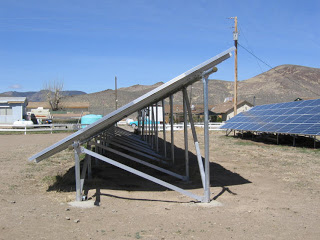 |
| Photo by Gary Reysa on http://www.builditsolar.com/Projects/PV/ColdSprings.htm |
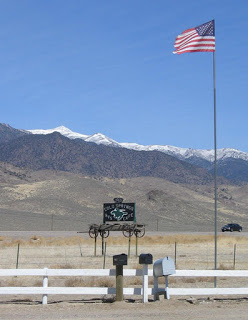 |
| Photo by Gary Reysa on http://www.builditsolar.com/Projects/PV/ColdSprings.htm |
I AM GOING TO DROP A STINK BOMB ON YOU!
 |
| Image source: www.timtim.com |
 |
| Image source: www.learner.org |
 |
| Image source: Michael E. Mann & Lee R. Kump, Dire Predictions: Understanding Global Warming (DK Books) 2008 , page 35. |
 |
| Image source: Michael E. Mann & Lee R. Kump, Dire Predictions: Understanding Global Warming (DK Books) 2008 , page 35. |
The Baseball Star Vs. The Climate Scientist
To my complete surprise, only 6 people including me approached Dr. Hansen after his lecture. A couple hundred dedicated scientists must have attended this lecture too. I am still shocked how easy it was to approach him and how accessible & friendly he was. Dr. Hansen was very warm and personable. He even enthusiastically allowed me to take my picture with him. I thanked him for his efforts protesting in front of the White House in October against the XL tar sands pipeline. Dr. Hansen seemed pleased by my comment, but then stated, “Unfortunately we have not done anything yet to stop the increase of greenhouse gases.”
This was in such striking contrast to when I stood in line in November with hundreds of people to wait over an hour & pay $27.95 to get the autograph of local World Series baseball hero, David Freese. There was even horrible traffic and a couple of minor car accidents for people to race to see this baseball player. Granted, Dr. James Hansen is a diehard Yankees fan, so he might understand my deep love for baseball & meeting the stars. On the other hand, this shows how upside down our priorities are as a society. When are we really going to hold scientists with great esteem & respect and stop idolizing music, pop, movie and sports stars to an insane level?

